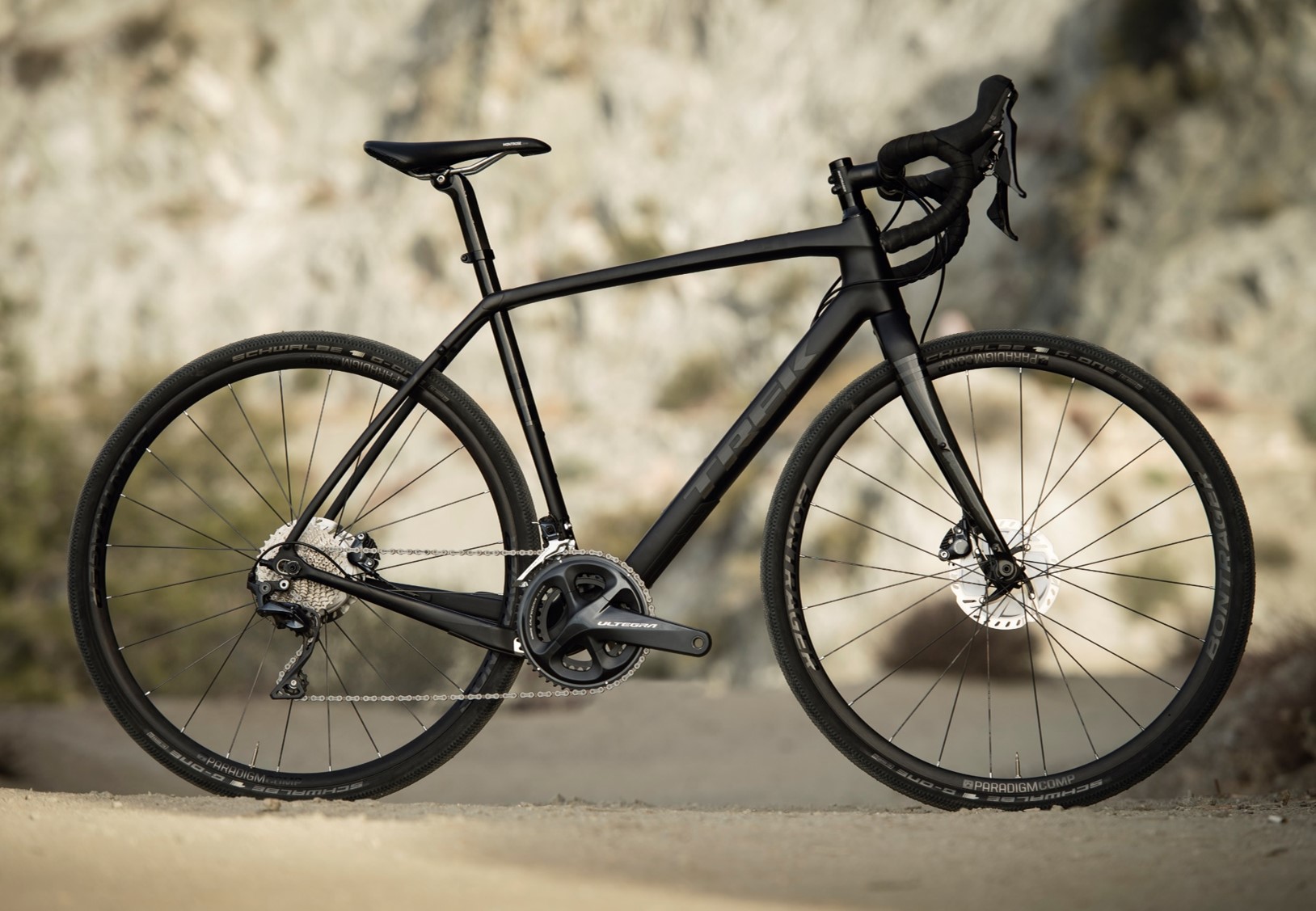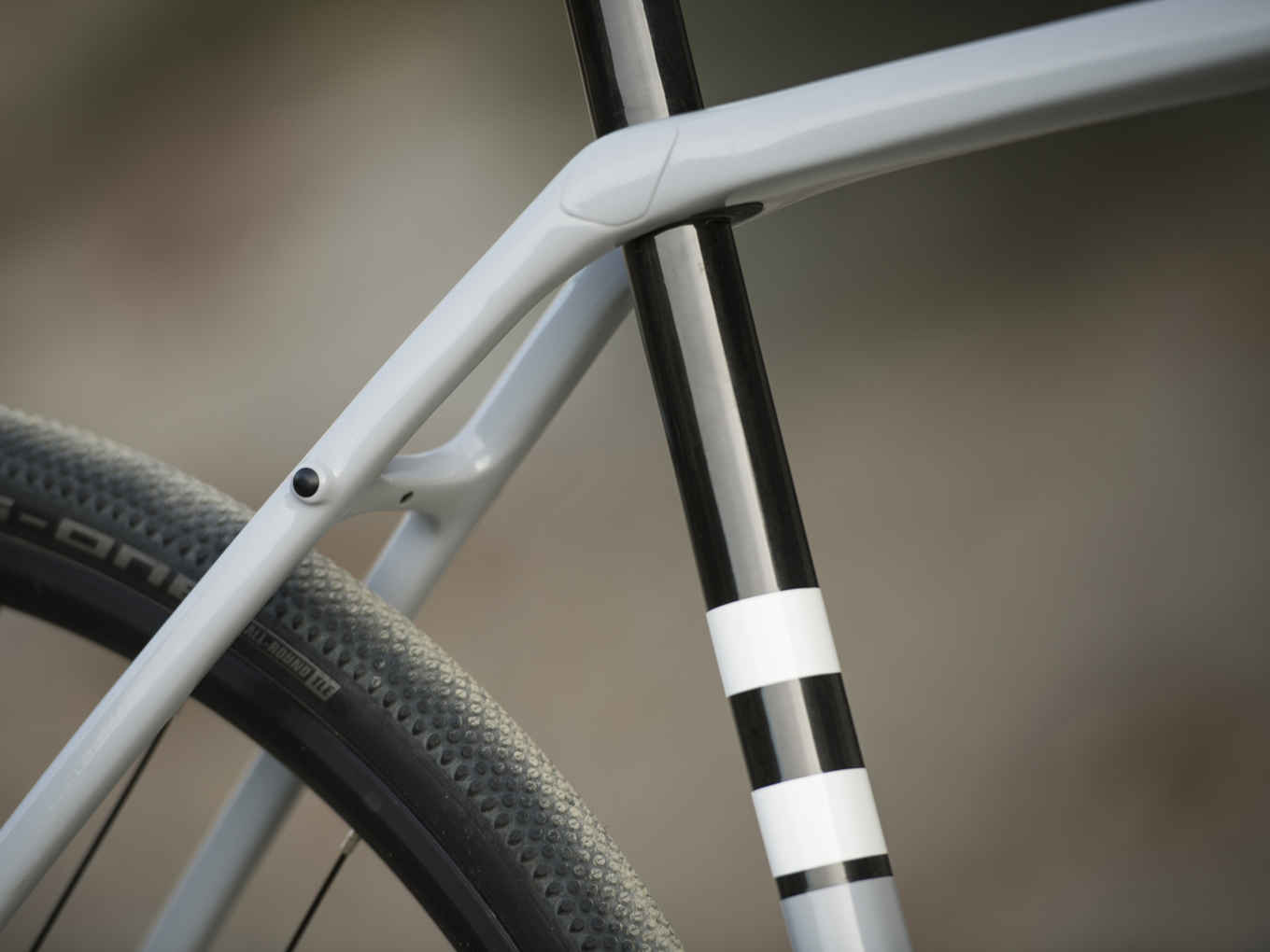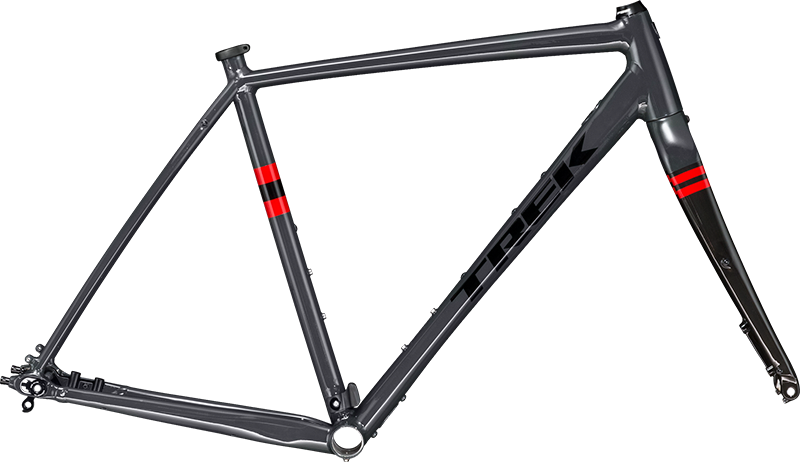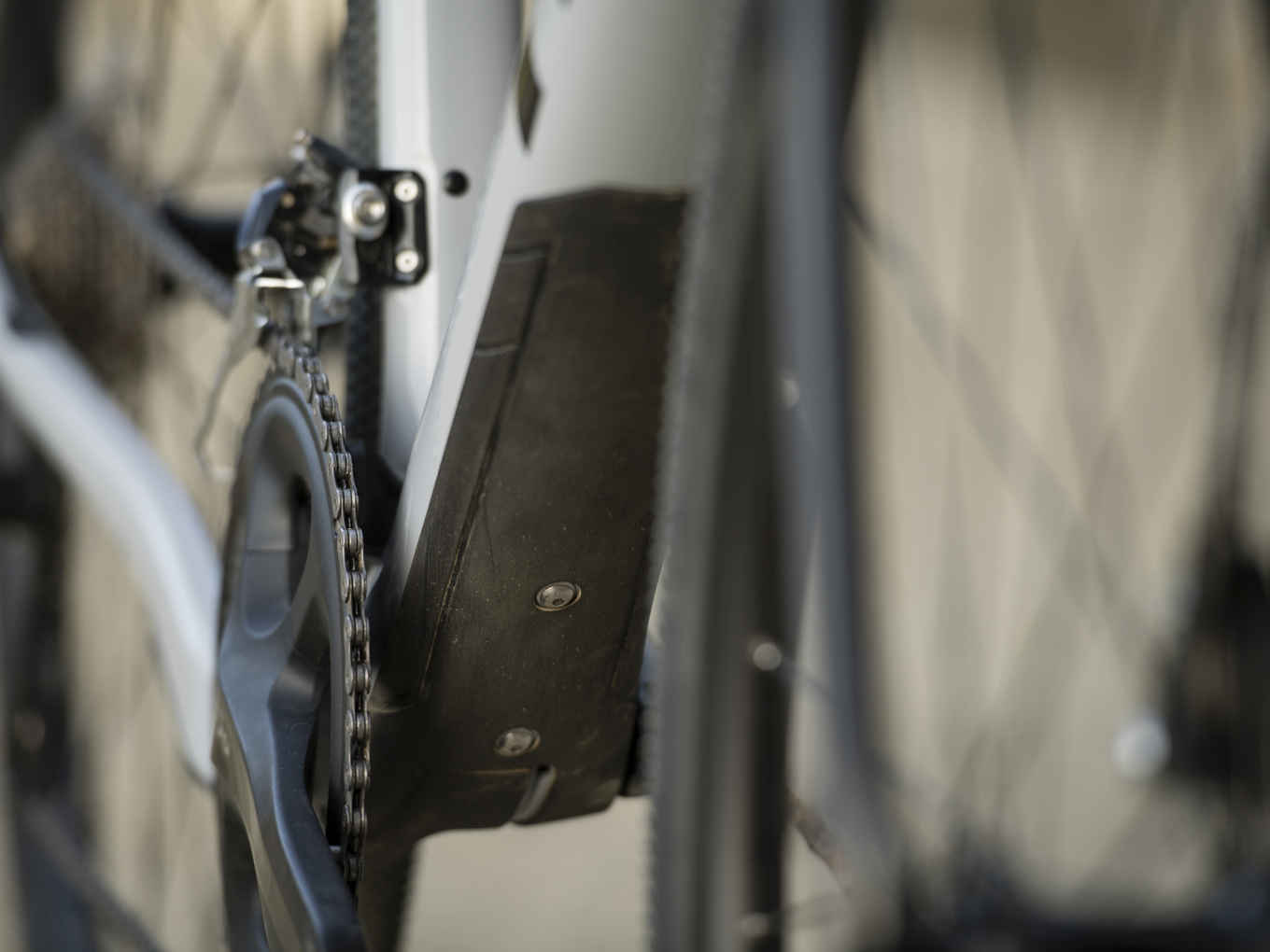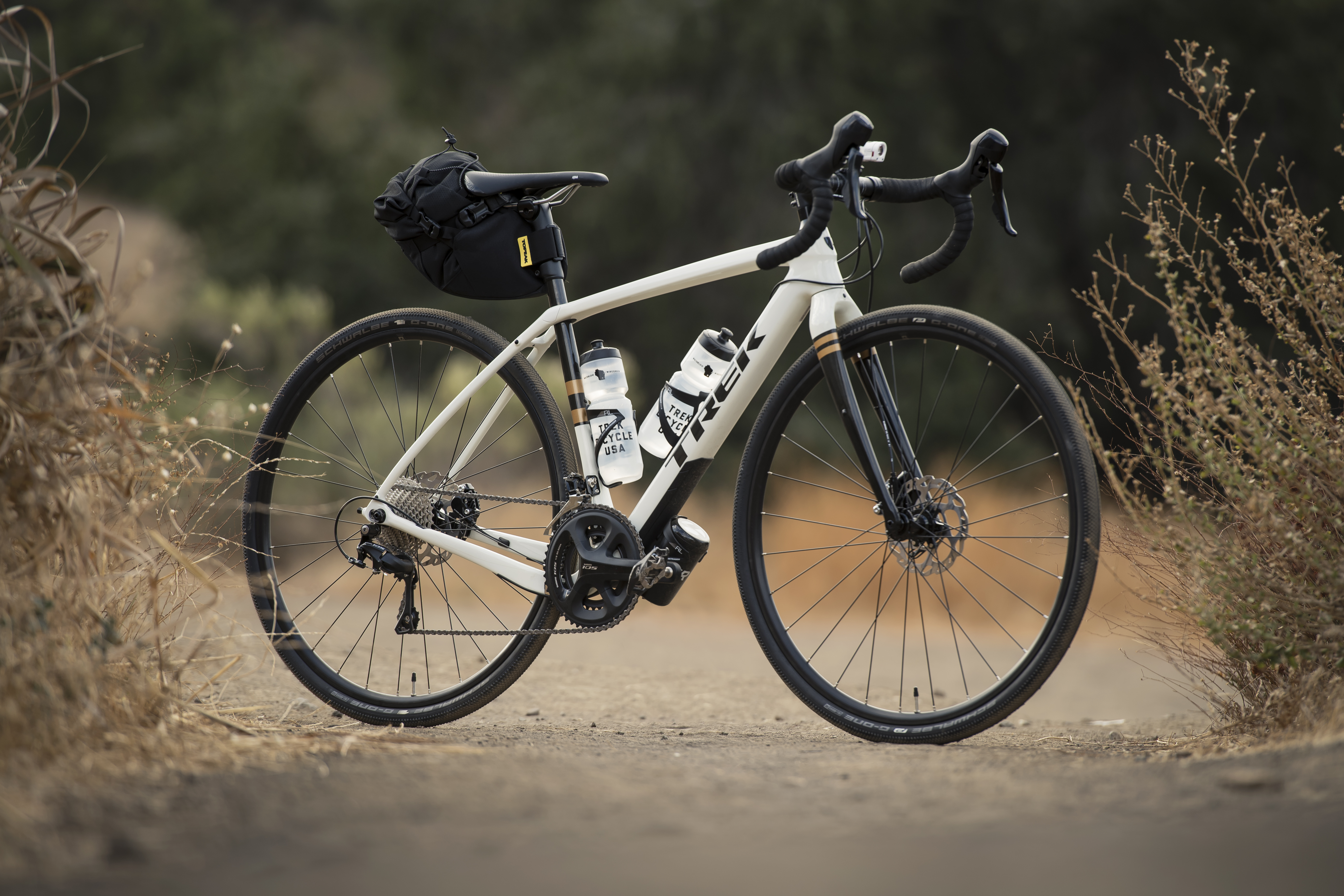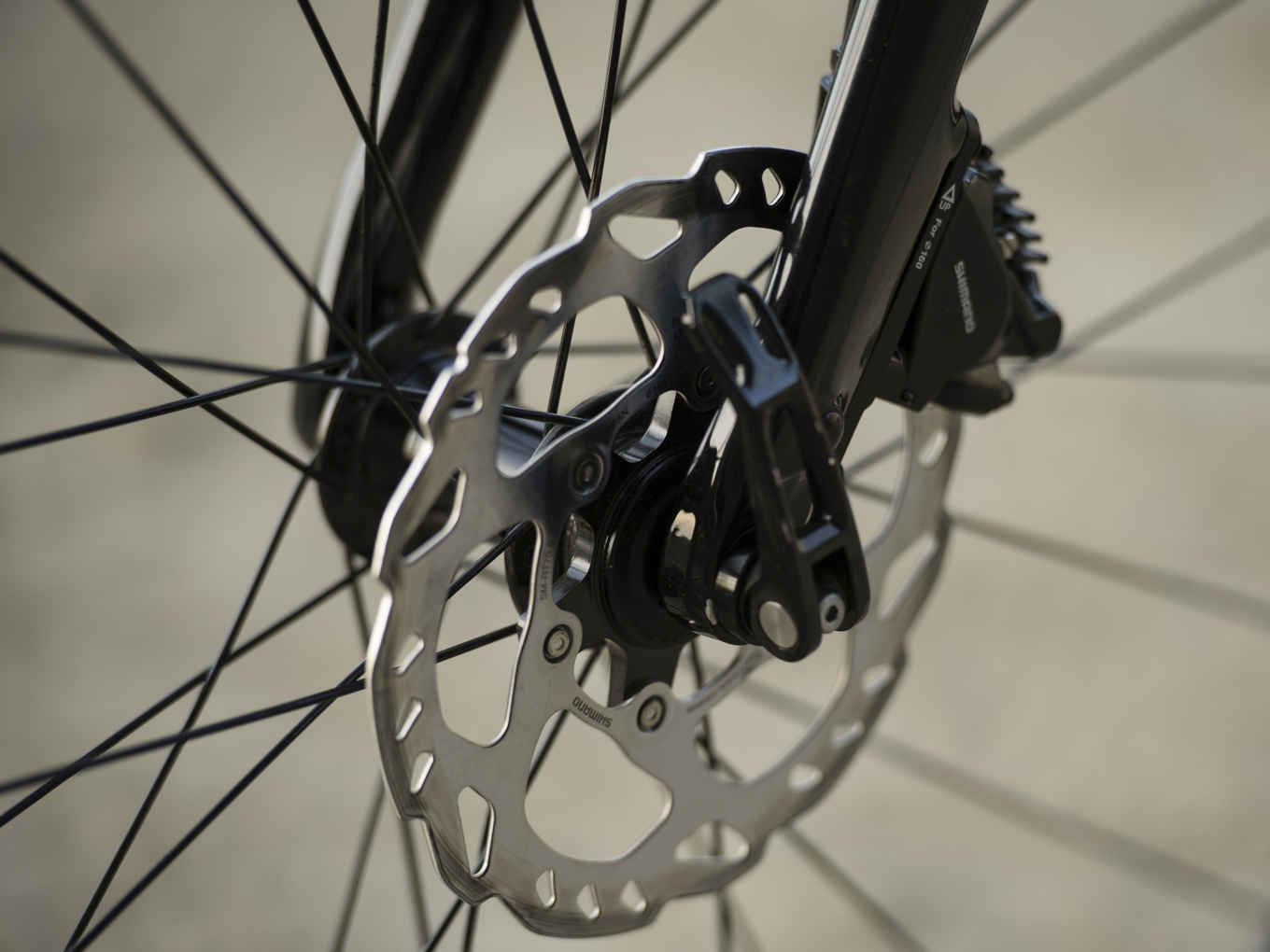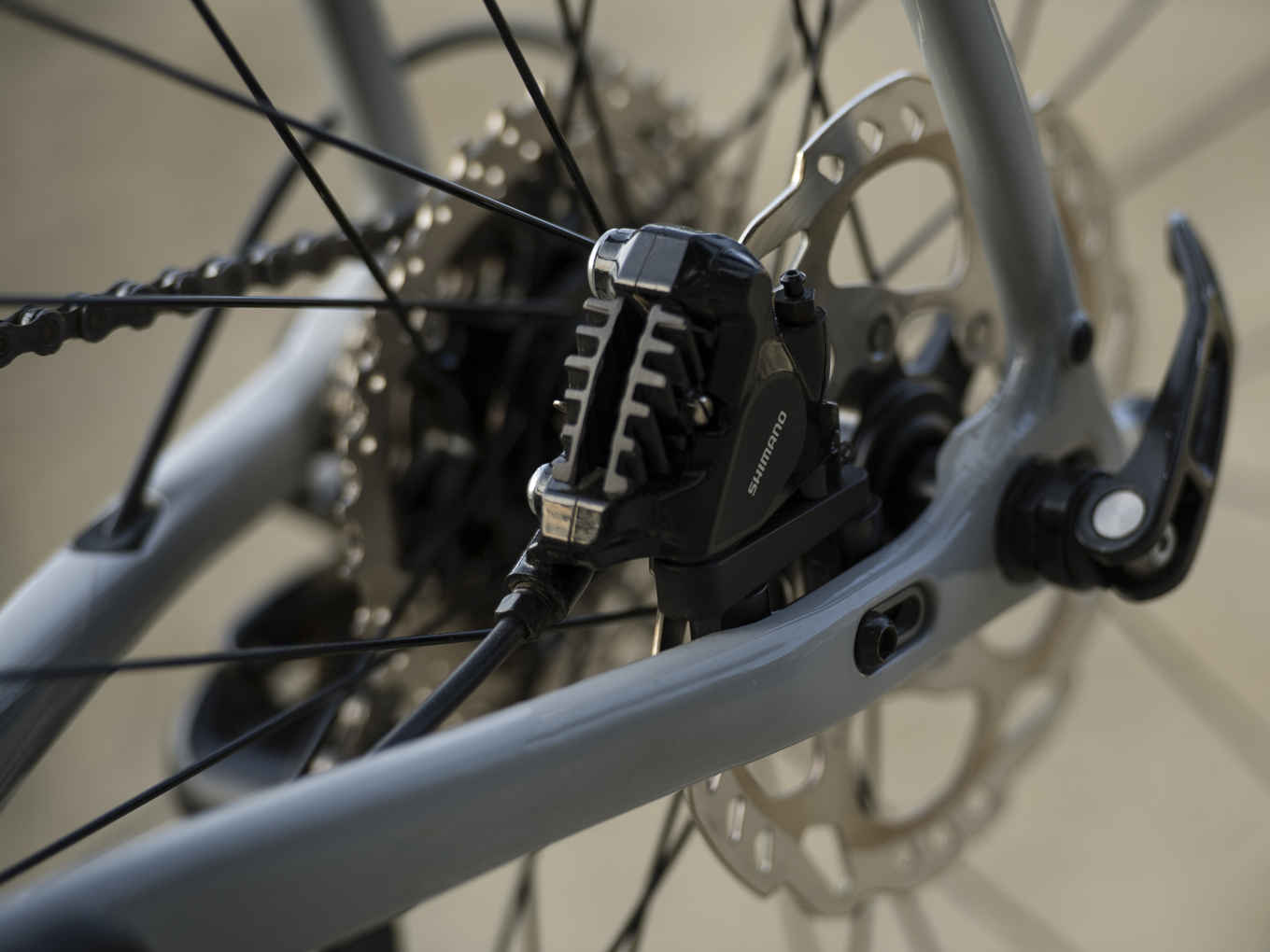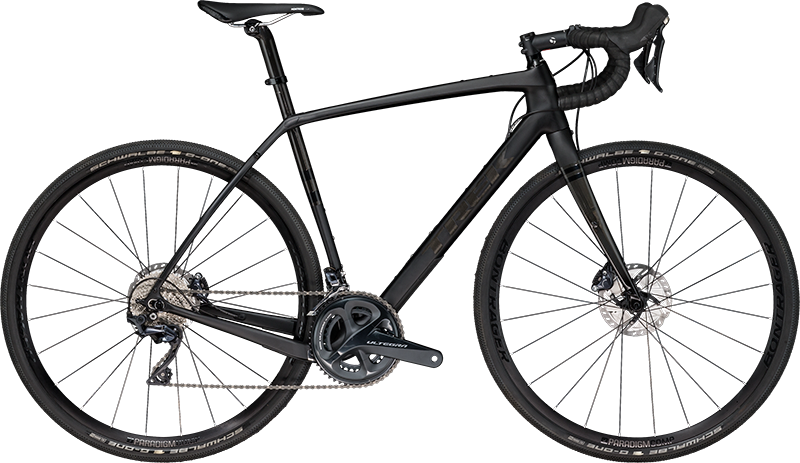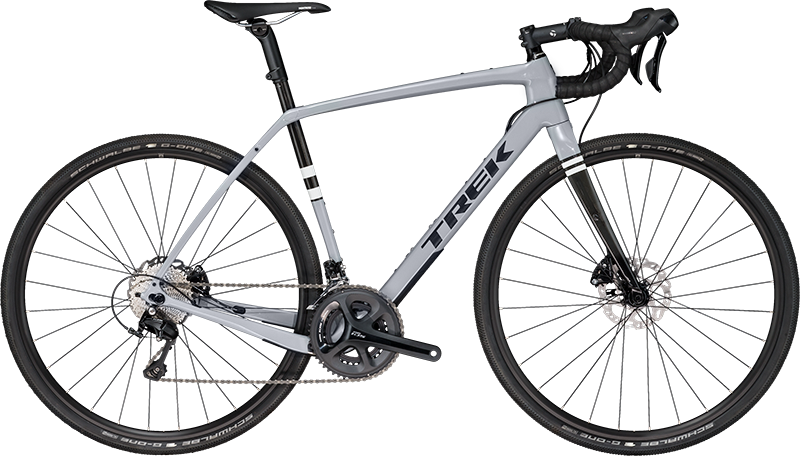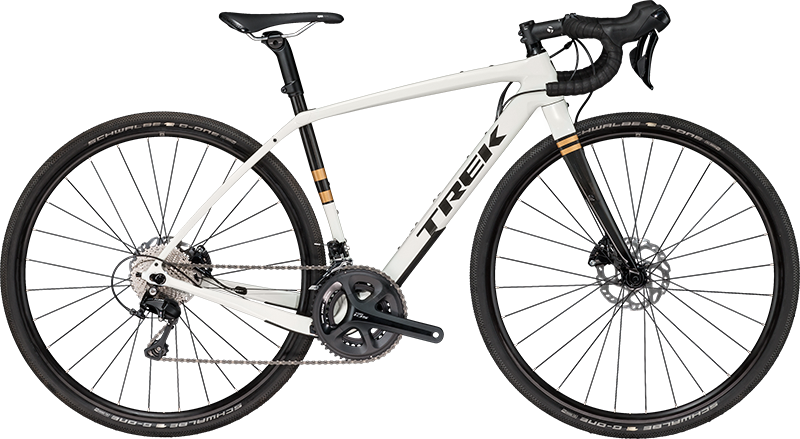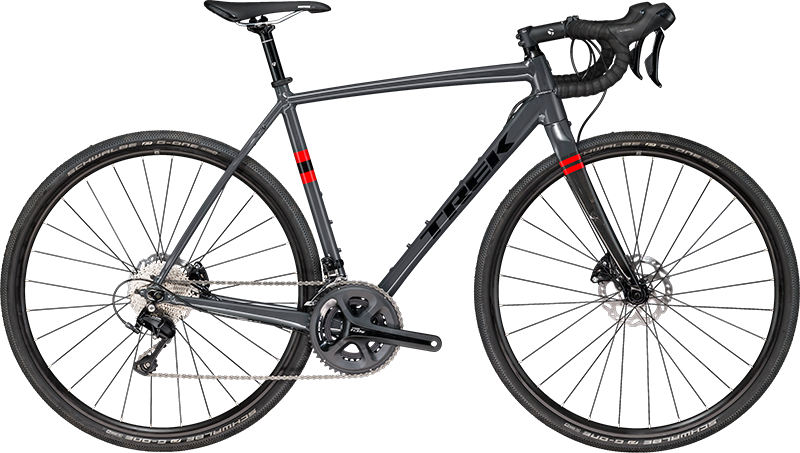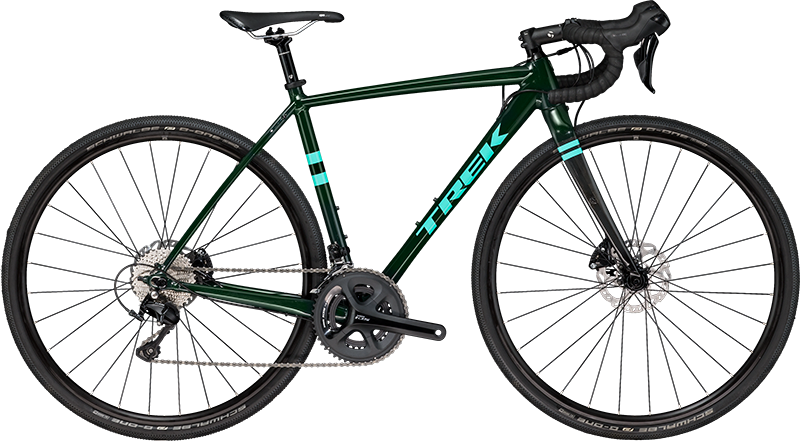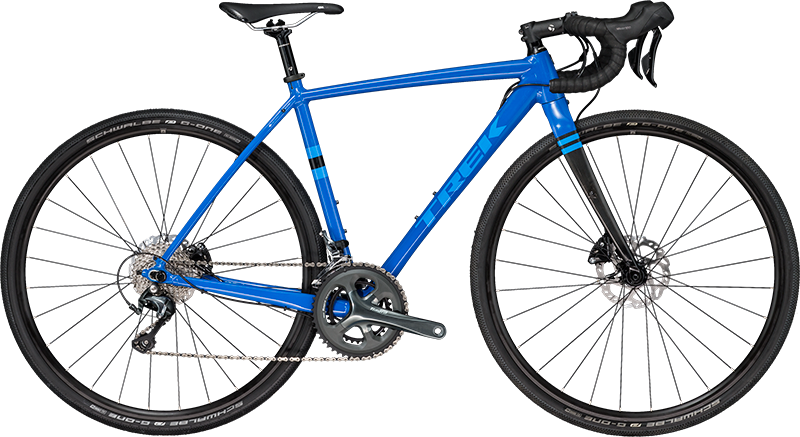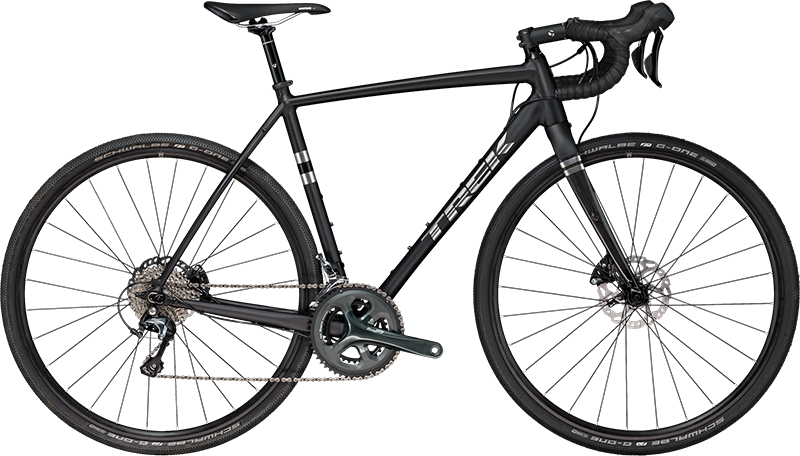It was only a matter of time. With bikes like the popular Domane Gravel, Crockett, and Boone, you knew that Trek had to have a true “gravel specific” bike in the works. Yet, with the introduction of the Checkpoint, Trek assures us that this is not just a slightly tweaked version of a previous model. Instead, the Checkpoint is a new from the ground up attempt at capturing some of the exploding gravel market with a bike that includes some features unique to Trek.

The Checkpoint will be available in both carbon and aluminum models, both of which offering clearance for 700c x 45mm tires. But, the bikes will ship complete with Schwalbe G-One gravel tires in a 700c x 35mm size. Also, don’t expect to run 650b on the Checkpoint – Trek says the frame is purpose built around 700c wheels and tires and 650b is not recommended.
The larger tires obviously contribute a lot to the ride smoothing ability of any gravel bike, which is why Trek says you’ll only find their IsoSpeed decoupler system on the SL carbon bikes, and on the rear. Apparently, Trek feels that the addition of it to the front of the bike wouldn’t be a big enough benefit for the added complexity, and that the aluminum bikes already have a fairly smooth ride and the lack of IsoSpeed helps make them more affordable.
In addition to the larger tire clearance, new geometry also sets the Checkpoint apart. Calling it a gravel specific geometry, the Checkpoint uses the same reach as a Trek Boone, but includes a taller stack height and lower bottom bracket for more comfort and stability. Add in the Stranglehold dropouts which allow adjustments in chainstay length to make the bike even more stable or more agile, and you’re left with a ride that should be noticeably different than a cross bike.
As we’ve seen on a few carbon gravel bikes to date from other brands, the SL frames make use of a swooping drive side chainstay to provide necessary clearance for big tires and 2x drivetrains. However, if you want to go 1x, you’re more than able to do that as well with the Control Freak cable management system making it clean and simple. The same applies for wired electronic drivetrains as well.
Carbon Armor might be something we’re accustomed to seeing on Trek’s mountain bikes, but it makes a lot of sense here as well. With the downtube and bottom bracket area getting additional protection, the frames also include integrated chain keepers to keep errant chains from damaging the frame.
Gravel bikes are typically hung with lots of gear, so the Checkpoint has plenty of mounts to make that easier. The SL frames feature a top tube bag mount, three bottle mounts inside the front triangle on most frames, and a fourth bottle cage mount on the downtube. There’s also rack mounts on the fork, and the ability to run rear racks like the Bontrager BackRack Disc. Vanishing fender mounts and Bontrager Blendr light, computer, and GoPro compatibility finish off the attachments.
Fitted with 12mm thru axles front and rear, both models also feature flat mount disc brakes. 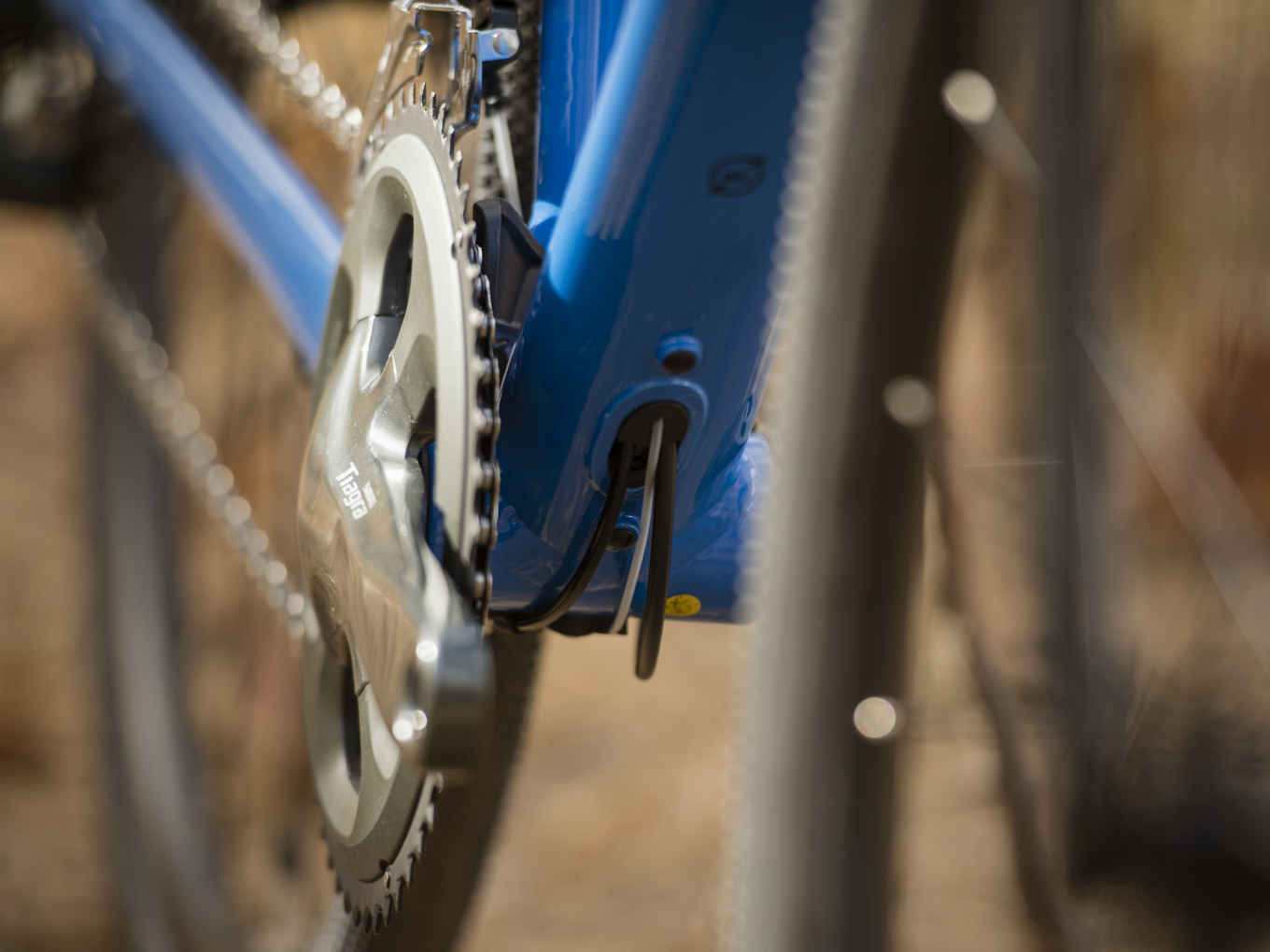
Both models also use some sort of press fit bottom bracket with the carbon SL opting for Trek’s BB90, where as the aluminum bikes get BB86.5.
At the highest end, the Checkpoint SL 6 includes a full Shimano Ultegra 2×11 drivetrain on the OCLV 500 carbon frame, Bontrager Paradigm Comp Tubeless ready wheels, and tubeless ready tires for $3,799.
Stepping down to the Checkpoint SL 5, we find the first Women’s model which as recently reported uses the same frame geometry, but is only offered in 49-56cm sizes whereas the men’s is offered in 49-61cm. The women’s model does have women’s specific touchpoints with different saddles and bars.
Both SL 5 builds offer a Shimano 105 2×11 drivetrain with OCLV 500 carbon frames, Bontrager Tubeless ready wheels, and Schwalbe tubeless ready tires for $2,799.
The checkpoint SL frameset is also available at $1,999.
Checkpoint ALR 5 again comes in men’s and women’s with the same sizing as the carbon models and men’s/women’s touch points.
Obviously, at this point you lose out of the carbon frame for aluminum and with that you lose some features like IsoSpeed decoupler, additional mounts on the frame, and the seat mast design, but you still get the new geometry, Control Freak internal cable routing, and Stranglehold dropouts.
The 300 Series Alpha Aluminum frame is hung with a mixed Shimano 2×11 drivetrain, tubeless ready rims (but not tubeless ready tires), and hydraulic disc brakes for $1,999.99.
The entry point for the line is the ALR 4 which again comes in men’s and women’s with a Shimano Tiagra level 2×10 drivetrain, hydraulic brakes, and again tubeless ready wheels but not tires, for $1,789.99.
It’s worth noting that even the bikes that include tubeless ready tires will need Bontrager TLR rim strips, valve stems, and tire sealant to be run tubeless. Trek states that the frames come in at 1,240g for the SL with another 470g for the SL fork, and 1,570g for the ALR frame and 600g for the ALR fork, with all frames measured in a 56cm with a 300mm steerer length.
All bikes are available now, read our full review of the Checkpoint for more.
